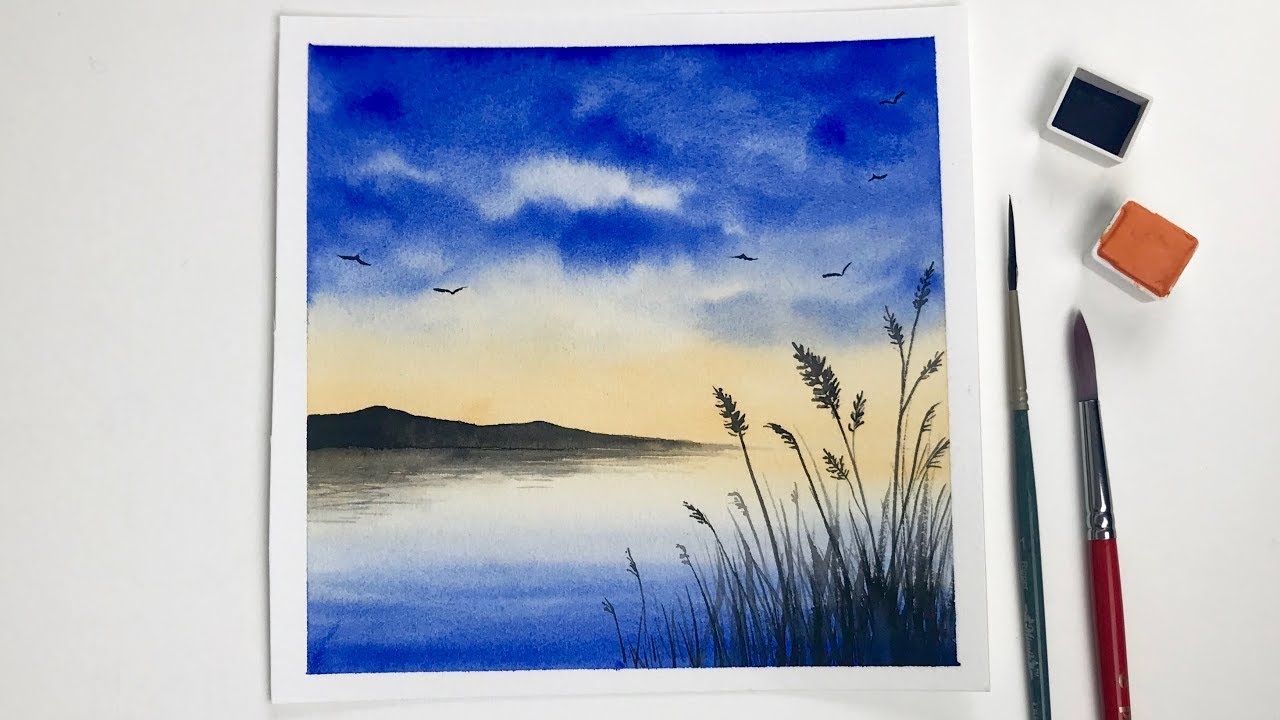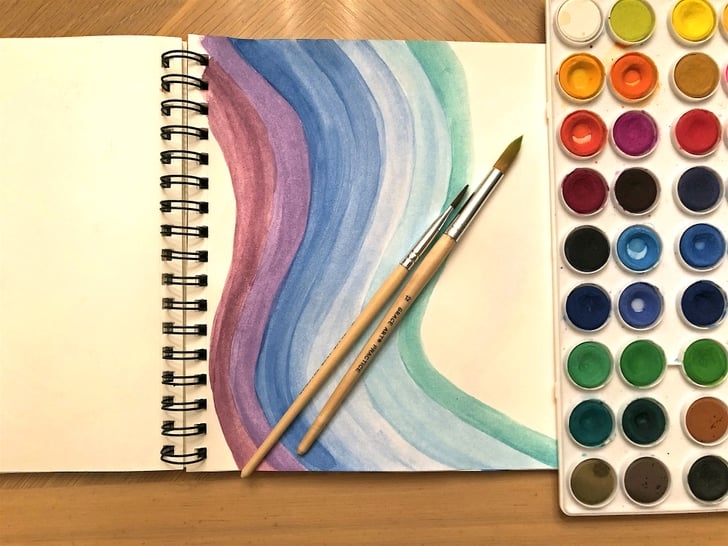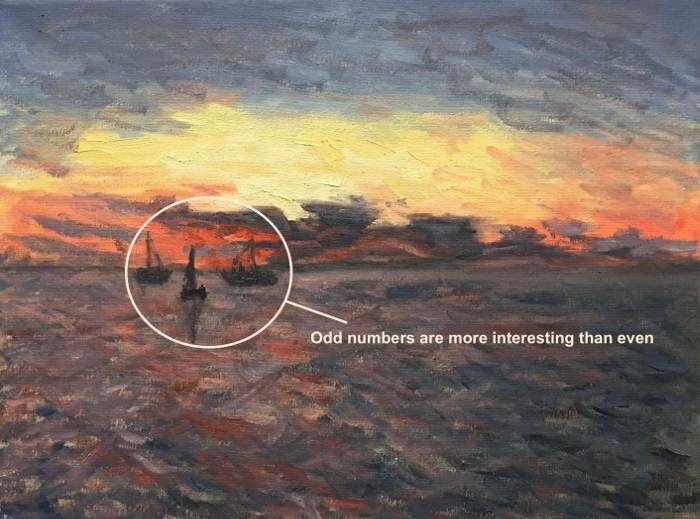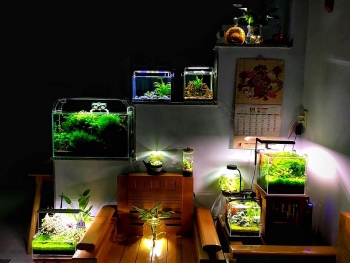7 Watercolor Tips for Beginners
 |
| Photo: Youtube |
No other painting medium is quite as unique as watercolor. Watercolor paintings are unmistakable. Fluid colors dance on the surface as the water pulls the pigment, producing delicate paintings. If desired, colors can be layered, resulting in controlled complexity. Or colors can be applied boldly, with broad, loose strokes, implying the subject, rather than describing it completely.
This distinctive medium is not without its share of challenges. Many find watercolors difficult to control, and if your first experience with painting was with an opaque medium (oils, acrylics, or tempera), the process of watercolor painting can feel "backwards". Let KnowInsider introduce you to 7 tips for watercolor beginners!
#1 Use Quality Paints
Quality matters. The materials that you use greatly influence the results that you can expect. Many artists decide to purchase cheaper brands in order to "see if they like it", before committing a few more dollars to higher quality paints. While this is a good approach to some mediums, watercolor is different. There is a broad spectrum of quality, according to The Virtual Instructor.
Using lower-quality materials inevitably leads to lower quality results. Lower quality results often lead to frustration. It is wise to spend a little more on the higher quality paints in order to give your experience with watercolor a "fair chance".
#2 Use The Right Paper
 |
| Surfaces must be water-absorbent and capable of accepting multiple washes of color. Photo: PopSugar |
The surface on which watercolor is applied is extremely important. Surfaces must be water-absorbent and capable of accepting multiple washes of color. This means that appropriate papers and surfaces are typically heavier.
The weight of the paper refers to the weight of one ream of paper (500 sheets). The heavier the paper, the better suited it is for watercolor applications. I recommend using paper that is at least 140 lb. (300 gms). You can usually find this information clearly labeled on the front page of a pad.
#3 Stretch Your Watercolor Paper
Watercolor paper can be stretched to better absorb washes of color. Stretching your paper ensures a taut surface. Larger papers can be soaked in a bath of water, and while damp, adhered to a hardboard. Staples or heavy tape can be used to adhere to the paper. As the paper dries, it slightly shrinks, producing a suitable surface for painting.
Smaller papers can be simply adhered to a board using masking or paper tape and then lightly washed with water.
#4 Color Harmony
Of all the watercolor tips for beginners, maintaining color harmony is one of the most important. There are a few simple things to remember to maintain color harmony throughout your painting.
Dipping into twenty different colors spread around your palette is tempting but usually results in a discordant, muddy work. Limit your colors to just two or three, particularly in the early stages of a painting. Your subject will dictate which ones to choose from. I find for buildings, landscape, etc. starting with washes of earth colors - Raw Sienna and Burnt Sienna plus a little Ultramarine or Indigo, depending on what sort of atmosphere you’re after, gives a tight harmonious foundation to work on. More intense colors can be carefully introduced later if necessary, John Lovett cites.
#5 Center of Interest or Focal Point
 |
| For a painting to be successful the center of interest should be obvious and well-positioned. Photo: Draw Paint Academy |
A focal point or Center of Interest is an area of your painting that captures and holds a viewer's attention before letting it wander off to other regions of the painting. As well as an interesting part of the subject, the center of interest should contain the maximum tonal contrast and strongest region of color.
For a painting to be successful the center of interest should be obvious and well-positioned. Avoid placing the center of interest in the middle of a painting (either horizontally or vertically) unless you are after a static, formal composition.
Keeping the center of interest an unequal distance from each side helps position it correctly. Breaking the horizontal and vertical axis roughly in the ratio of 1:2 will also help to place the center of interest
#6 Draw Lightly
It's common practice to sketch the composition before painting begins. While some artists do not mind seeing the graphite marks through the painting, others prefer to have them covered completely by the watercolor applications.
In order to ensure that graphite marks are hidden, sketch lightly with an "HB" pencil. Avoid shading and concentrate on developing the contour lines. Softer pencils (2B, 4B, etc.) will produce lines that may be too dark, while harder pencils (2H, 4H, etc.) may create grooves in the surface of the paper.
Graphite applications can be gently lifted with a kneaded eraser before painting begins. But once watercolor has been added, it is virtually impossible to remove graphite marks from the surface.
#7 Don't Overwork Your Painting
A painting filled with carefully labored detail from one edge to the other can be difficult to look at. If you like to work with fine detail, consider including some areas of relief.
In this painting, the viewers' eyes can wander between the interesting textures and detail of the focal area and flat areas of relief provided by the expanse of foreground water.
| WET ON DRY TECHNIQUE VS. WET ON WET TECHNIQUE There are many techniques you can use while watercolor painting, but here are two basic techniques that will give you different result depending on what you're going for: Wet on dry: applying wet paint onto dry paper, or wet paint onto an area of dry paint. This technique allows for more control and crisp, defined edges. The paint will only go where your brush takes it, as said by Strathmore. Wet on wet: wet paint is applied to wet paper, or added to a wash of fresh paint. This creates a fluid, fun and unpredictable effect. There is less control with a wet on wet technique. To try it, lay down clean water on the paper, then add watercolor paint to the wet areas. You'll see the paint flows to the wet areas. |
 How to Take Care of your Ornamental Fish: 5 Tips for New Fish Parents How to Take Care of your Ornamental Fish: 5 Tips for New Fish Parents Fish come in all different shapes and sizes, making them some of the coolest pets to own. Fortunately, fish are pretty easy to take care ... |
 Top - notch tips for a perfect pinic with family Top - notch tips for a perfect pinic with family Hanging out for a family picnic is a great way to bond the relationship and enjoy time together. A good preparation for picnic will make ... |
 Useful Tips to Drive on Icy Road in Winter Useful Tips to Drive on Icy Road in Winter Winter is a challenging time for drivers, as sub-zero temperatures lead to potentially dangerous icy road conditions. Let's check out some useful tips for driving ... |


























